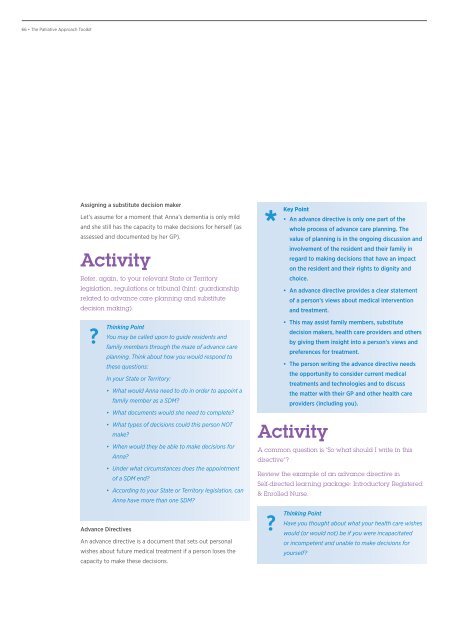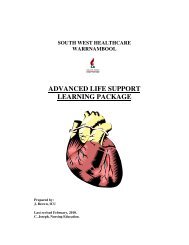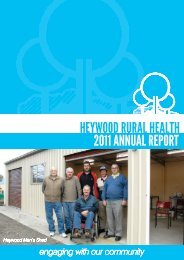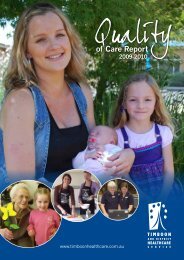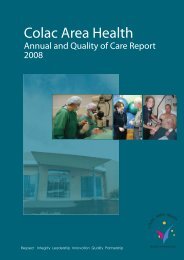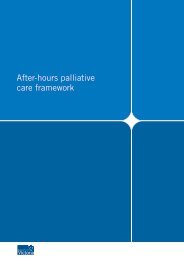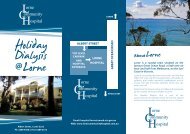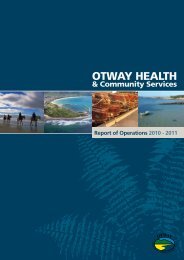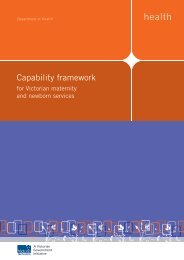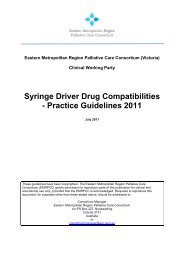Self Directed Learning Package - University of Queensland
Self Directed Learning Package - University of Queensland
Self Directed Learning Package - University of Queensland
- No tags were found...
Create successful ePaper yourself
Turn your PDF publications into a flip-book with our unique Google optimized e-Paper software.
66 • The Palliative Approach ToolkitAssigning a substitute decision makerLet’s assume for a moment that Anna’s dementia is only mildand she still has the capacity to make decisions for herself (asassessed and documented by her GP).ActivityRefer, again, to your relevant State or Territorylegislation, regulations or tribunal (hint: guardianshiprelated to advance care planning and substitutedecision making).Thinking PointYou may be called upon to guide residents andfamily members through the maze <strong>of</strong> advance careplanning. Think about how you would respond tothese questions:In your State or Territory:• What would Anna need to do in order to appoint afamily member as a SDM?• What documents would she need to complete?• What types <strong>of</strong> decisions could this person NOTmake?• When would they be able to make decisions forAnna?• Under what circumstances does the appointment<strong>of</strong> a SDM end?• According to your State or Territory legislation, canAnna have more than one SDM?Advance DirectivesAn advance directive is a document that sets out personalwishes about future medical treatment if a person loses thecapacity to make these decisions.Key Point• An advance directive is only one part <strong>of</strong> thewhole process <strong>of</strong> advance care planning. Thevalue <strong>of</strong> planning is in the ongoing discussion andinvolvement <strong>of</strong> the resident and their family inregard to making decisions that have an impacton the resident and their rights to dignity andchoice.• An advance directive provides a clear statement<strong>of</strong> a person’s views about medical interventionand treatment.• This may assist family members, substitutedecision makers, health care providers and othersby giving them insight into a person’s views andpreferences for treatment.• The person writing the advance directive needsthe opportunity to consider current medicaltreatments and technologies and to discussthe matter with their GP and other health careproviders (including you).ActivityA common question is “So what should I write in thisdirective”?Review the example <strong>of</strong> an advance directive in<strong>Self</strong>-directed learning package: Introductory Registered& Enrolled Nurse.Thinking PointHave you thought about what your health care wisheswould (or would not) be if you were incapacitatedor incompetent and unable to make decisions foryourself?


